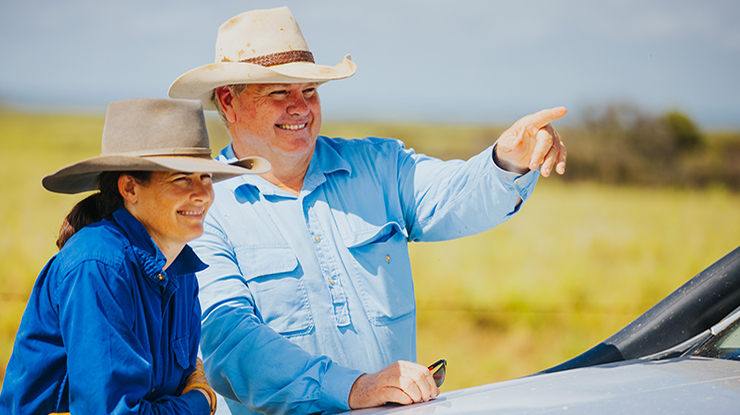Creating a carbon account now easier than ever
30 March 2023

Key points:
- The new MLA Carbon Calculator will help producers baseline their emissions to help develop their emissions reduction strategies.
- By baselining with the carbon calculator, producers will have the data available to pursue emerging market opportunities.
- Producers such as Elizabeth and David Hill (featured) have used the opportunity to baseline their emissions to identify how they can improve their herd’s feed efficiency to reduce on-farm emissions.
Creating a carbon account has now been made easier with MLA’s Carbon Calculator.
Based off the Primary Industries Climate Challenges Centre (PICCC) Sheep and Beef Greenhouse Accounting Framework (SB-GAF) tool, the MLA Carbon Calculator will help producers identify their net greenhouse gas (GHG) emissions and identify emissions reduction strategies.
MLA Environmental Markets Project Manager, Katelyn Lubcke, said the tool will help producers to understand their emissions profile and support decision making to reduce on-farm emissions.
“The Australian red meat and livestock industry has set a target to be carbon neutral by 2030 (CN30),” Katelyn said.
“This means in seven years’ time, Australian beef, lamb and goat production will make no net release of GHG emissions into the atmosphere.
“Tools such as the MLA Carbon Calculator will support the industry to achieve this target.”
How it works
The calculator assists producers by providing a baseline carbon account with total GHG emissions for the enterprise and the emissions intensity of the product produced – for example, emissions produced per kilogram of beef/sheepmeat/wool.
A carbon account includes two key elements:
- GHG emissions, including enteric methane from ruminant production and carbon dioxide from fossil fuels
- direct and indirect emissions of nitrous oxide from fertiliser application, and excreta and methane from manure.
“The value of using the tool is that it provides the ‘starting point’ for the emissions reduction process as well as providing insights into your individual business’ position,” Katelyn said.
“There are market opportunities emerging for producers who can quantify their carbon emissions, and reductions, so using the carbon calculator and other tools is important in identifying ways to improve your profitability and carbon outputs.”
Meet the producers
Top tips for getting ready for your carbon reduction journeyAccess the MLA Carbon Calculator Learn more about carbon accounting at Creating a carbon account for your business Record information required to create a carbon account such as:
Discover MLA producer tools and resources Know the different land and vegetation types across your property so you can easily identify areas to build carbon stocks.
Identify information gaps early on so you can find the answers and build a strong foundation for your carbon neutral plan. |


